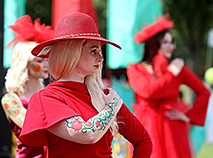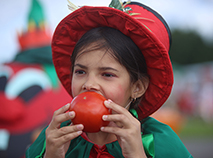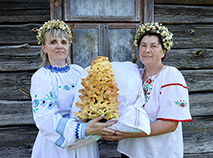Gastronomic Tourism in Belarus
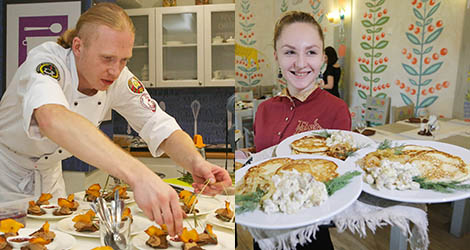
Gastronomic tourism in Belarus: Authentic culinary traditions, unique local food and dishes, signature food festivals and tasting tours, popular restaurants and vibrant street food scenes...
Food and national cuisine are essential elements of every journey around Belarus (regardless of your travel purpose or tourism style). But if you view gastronomy as both a cultural experience and special pleasure, Belarus has remarkable surprises to offer.
Gastronomic tours, excursions, tastings: what Belarus offers to gourmets
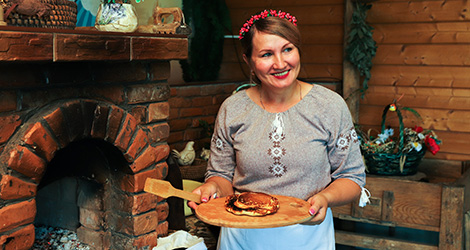
Belarusian national cuisine ranks among Europe's most diverse. Since the era of the Grand Duchy of Litva (Lithuania), it has woven together Slavic, Baltic, Jewish, and other culinary traditions.
Belarusian cuisine shares recognizable similarities with Russian, Lithuanian, Ukrainian, Polish, and Jewish culinary traditions, yet it remains distinctly unique, rooted in the regional history, local agricultural practices, and indigenous ingredients.
Centuries ago, each social class cultivated its own culinary traditions, giving rise to distinct branches of national cuisine: peasant and bourgeois, szlachta nobility and aristocracy. Contrary to popular belief, Belarusian cuisine is far more than just a variety of potato dishes. Of course, potatoes have enriched the diet and become a true 'second bread' for Belarusians, forming the foundation of numerous recipes. However, this only happened in the 18th century when potatoes began to be widely cultivated in Europe.
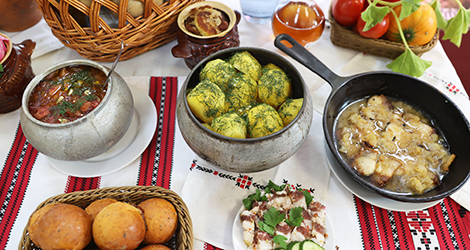
Today, ethnographers, local historians, culinary experts, and chefs in Belarus are reviving traditional customs, including forgotten recipes, bringing them back into the spotlight. As part of themed gastronomic tours and excursions to agro-eco estates, visitors are invited to sample authentic regional dishes from across the country, learn about their history and participate in hands-on cooking workshops. In restaurants and cafes specializing in national cuisine, you can sample both the most popular traditional dishes (draniki, kalduny, vereshchaka, machanka, babka, zhur, nalistniki, kindyuk) and experience refined aristocratic cuisinein a modern interpretation (moose mouffle, zander Radziwill-style, Naroch eel, and more).
Belarus has inscribed numerous unique dishes and authentic culinary traditions on its list of intangible cultural heritage. Among them are 235 (!) grated potato recipes alone: from the most delicious classic draniki to unusual regional variations. The list also features breads, round loaves, meat specialties (Vitebsk dumplings with 'souls', Odelsk goose sausages), Matyuki 'butter ram', and the Porozovo bankukha (a spit-roasted cake)...
Belarus truly amazes gourmets with its incredible variety of potato pancake recipes. Every region boasts not only its own secret ingredients but also unique cooking methods. These featured bandys on a bed of oak leaves and bondys with pork blood. Deruny might be cooked with mushrooms, pepper, or cottage cheese fillings. And the classic draniki-zaparniki were made with hot whey to give them a distinct milky flavor...
Belarusian cuisine also boasts an impressive array of fish dishes, thanks to the country's abundant lakes and rivers. For example, in the Braslav region, you can savor an exclusive local specialty – eel baked in sour cream. This dish offers not only a gourmet delight but also a rare culinary experience. Today, the European eel can still be found in Belarus' Naroch and Braslav lake systems, along with several other northwestern lakes. These waters serve as vital habitats where eels mature before embarking on their extraordinary migration to spawn in the Sargasso Sea. Fishing regulations strictly prohibit recreational and sport fishing of eel in all Belarusian water bodies. Only licensed commercial operators (fishing leaseholders) are permitted to harvest eels, making restaurant dining the exclusive way to sample this delicacy.
Modern Belarus has gained recognition for its high-quality food products made by companies of all sizes. This has spawned an exciting new trend in gastronomic tourism. Tasting tours are organized at:
- Major food manufacturers (dairy plants, confectionery factories, etc.)
- Small craft producers (artisan cheesemakers, bakeries, family farms, specialty sweet manufacturers, etc.)
Visitors get a behind-the-scenes look at production secrets and discover Belarus' most fascinating delicacies through tastings of unique local flavors. These experiences go beyond traditional national cuisine, offering modern gastronomic discoveries. Belarusian cheesemakers produce both traditional local varieties (cottage cheeses with various additions, processed cheeses, and rennet cheeses) as well as patented original creations and adaptations of Italian, French, Georgian, and other international styles.
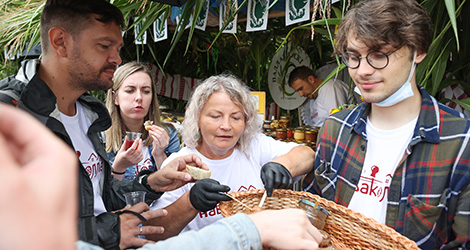
Snail farms operate in various corners of Belarus, welcoming gourmet tourists during the warm season to explore the mollusk cultivation process and sample dishes made from them. The country has also seen the emergence of its first shrimp farm, which may soon open its doors to visitors as well.
Many Belarusian fish farms offer a unique blend of fishing, leisure, and culinary delight – guests can either cook their catch themselves or have it prepared by professional chefs.
A special 18+ tourism niche includes tours of alcohol producers, ranging from large-scale operations (sparkling wine factories, breweries) to small craft beer restaurants and traditional distilleries in ethnographic complexes and estates.
For example, at the Grand Duchy of Sula medieval history park in Stolbtsy District, the tradition of crafting the legendary “starka” spirit has been revived. Using 16th-century recipes, this ultra-pure alcohol is made from sprouted grain and aged in antique oak barrels to develop its distinctive flavor and aroma. The process relies on Belarus’ only surviving 19th-century copper still – incidentally, a production method that aligns starka closely with whiskey.
The Rumskiya Stsezhki Ecotourism Complex (Volozhin District) invites guests to taste the original Zabelport alcoholic drink and learn its production secrets, alongside savoring Count Tyshkevich’skalduny (dumplings) made from a restored 1894 recipe. In the Belovezhskaya Pushcha National Park, tourists can sample the unique Pushchansky beverage – often infused with local herbs and berries – as well as the legendary zubrovka, a bitter tincture made from herbs that are much loved by the forest’s European bison…
Under Belarusian law, authentic national alcoholic beverages may only be produced under special licenses.
Food Festivals
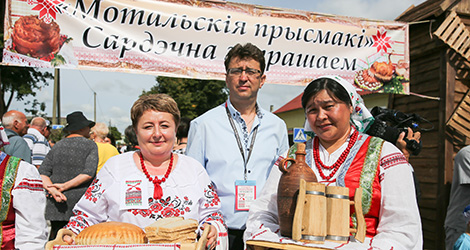
Every year, Belarus hosts vibrant food festivals, many of which have become iconic regional brands. Among them are:
- Motol Treats in the agro-town of Motol, Ivanovo District
- Batstkava Bulka bread festival in Svisloch
- Artisan Cheese Festival in Slavgorod
- Cheese Festival in Grodno
- Ivye Tomato Festival in Ivye
- Cherry Festival in Glubokoye
- Cucumber Celebration in Shklov
- Strawberry Festival in Dvorets, Luninets District
- Cranes and Cranberries of Miory Land eco-festival in Miory
These “flavorful” festivals celebrate local culinary traditions, iconic regional products, and the Belarusian hospitality –bringing together food lovers and proud communities.
Bykhov District has made its mark with the Great Bard-Fishing Festival – a vibrant multicultural event featuring live music, creative workshops, a fishing tournament, local cuisine, and outdoor activities.
Every two years, Grodno hosts the grand finale of the renowned Festival of National Cultures, celebrating the traditions, music, dance, costumes, and cuisines of all ethnic groups living in Belarus. At the festival’s themed courtyards, representatives of Belarusian regions and diasporas prepare hundreds of dishes, taking visitors on a global culinary journey.
Throughout the year, Belarus also holds numerous festivals and holidays that showcase its cuisine and other culinary traditions.
These include:
- Maslenitsa (Butter Week)
- Kupala Night Festival (Summer Solstice)
- Harvest festivals like the Honey Feast, Apple Feast, and Nut/Bread Feast of the Savior
- Dazhynki harvest festival
- Bogach (Autumn Feast),
- Christmas festivities,
- Town/village anniversaries, ethnic culture days, and other themed events where food plays a major role. Here guests can try rare ritual dishes of Belarus.
Another pillar of Belarusian culinary tourism is restaurant festivals, which promote fine dining, innovative flavors, and chef creativity.
The most ambitious project of this kind is Gastrofest, launched in 2016. This year-round series of themed festivals elevates gastronomic culture while uniting food and drink enthusiasts. Participating venues offer original tasting menus at fixed prices, and visitors vote to crown each edition’s top chefs – blending affordable gourmet experiences with friendly competition.
Beyond this, Belarusian restaurants and cafés increasingly host their own seasonal or product-themed festivals, spotlighting local ingredients and culinary trends.
For a truly unique experience, visitors should explore Belarus’ lively street food festivals. Among the most popular is Vulitsa Ezha [Food Street], a nationwide project that has been delighting foodies since 2015. Its festivals take place in Minsk and regional cities, transforming into large-scale urban picnics that combine gourmet cuisine, local produce, cooking workshops, live entertainment, and outdoor activities.
Various street food venues also host seasonal themed gastronomic events throughout the year.
Music, food, and dance festivals, often supported by Belarusian breweries, are another major draw. Highlights include A-Fest (sponsored by Alivaria), KharchFest and LIDBEER in Lida (featuring Lidskoe Pivo),Vulitsa Ezha. Beer Edition in Minsk (showcasing craft breweries).
Restaurants in Belarus
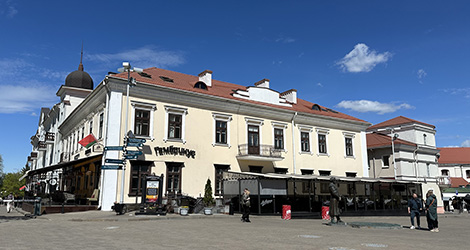
Belarus boasts over 15,700 dining establishments (2024 data), including:
- Cafés & bistros
- Canteens
- Bars
- Coffee shops
- Restaurants
- Fast-food eateries
- Other catering facilities
While many restaurants serve global classics, such as Italian pizza, French steak tartare, American burgers, Japanese sushi, grilled steaks, and fresh seafood, chefs often add a local twist by incorporating regional ingredients into their dishes.
For travelers seeking to truly savor Belarus beyond its most famous national dishes, exploring restaurants of Belarusian cuisine is a must. The country boasts approximately 240 dining establishments dedicated to traditional cuisine.Among them are:
- Classic eateries serving hearty folk dishes in an authentic setting
- Innovative concept restaurants where time-honored recipes, particularly from noble and gentry traditions, are reimagined through modern culinary techniques and unexpected flavor combinations
Upscale establishments frequently showcase premium local ingredients, includingBraslav lake fish, Vitebsk trout, Polesie mushrooms, Turov cheeses, Lida smoked butter and many more.
Minsk's notable Belarusian restaurants are Bulbashy, Litviny, Kukhmistr, Kamyanitsa, Grunwald, Svoi, Vasilki and others.
For an unforgettable atmosphere, several restaurants operate in castles and palaces. Among them are KnyazheskyDvor in the dungeons of Mir Castle, Getman restaurant and Dvortsovoye café at Nesvizh Palace.
Belarus' restaurant industry reached a new milestone as the inaugural WHERETOEAT BELARUS 2025 awards, supported by the National Union of Tourism Industry, unveiled the country's top dining establishments. The prestigious ceremony revealed a 100+ restaurant ranking, including a top 10 list, and honored winners across categories like Chef of the Year, Bar of the Year, Media Choice, Best Belarusian Cuisine Restaurant, and Best Sommelier. This marks the launch of what will become a regular national restaurant ranking.
Belarus' restaurant industry is booming, with growing numbers of concept-driven venues offering unique atmospheres and elevated service standards. The country boasts numerous authentic ethnic restaurants (Italian, Georgian, Chinese, etc.), many featuring foreign-born chefs.
Food courts and culinary markets have become the hottest dining trend in Belarus, offering everything from traditional local fare to global cuisine and chef-driven concepts. The crown jewel is Minsk's KONKORS food hall, the country's largest gastronomic marketplace featuring 30+ artisanal food stalls, farm-fresh products, and specialty souvenir shops under one roof.
The fast-food sector continues to innovate with groundbreaking projects like Mak.by, Belarus' first mobile restaurant launched in 2024. This unique roaming eatery (the first of its kind in the post-Soviet space) brings quality dining to towns without permanent locations and major national events.
Street Food
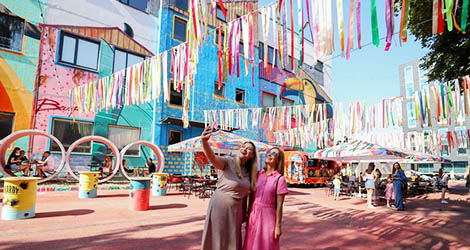
Belarus' urban food culture thrives through dedicated street food zones in major cities, and food trucks offering an impressive selection ranging from classic street food staples to signature chef creationsat tourist hotspots and festivals.
Specialty food stalls across Belarus serve up authentic street food rooted in national recipes, including draniki (potato pancakes) with creative toppings, potato dumplings, traditional pancakes, and also Belarusian twists on global favorites: The Dranburger - a potato pancake sandwich, and potato-crust pizza.
Minsk's Top Street Food Spots
- Pesochnitsa (11/10 Masherova Avenue, 45 Kuibysheva Street)
- Lutshaya Ulitsa (95-16 Nezavisimosti Avenue)
- LidbeerDvor Food Market (58 Nezavisimosti Avenue)
- Oktyabrskaya Street - the city's trendiest quarter featuringcafes and bars, vibrant nightlife spots, colorful murals in a converted industrial area
- Lakeside Park food court at the Northern Waterfront residential complex


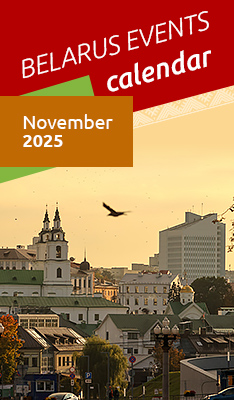




 print version
print version make home page
make home page add to bookmarks
add to bookmarks![Pesochnitsa [Sandbox] street food market, Minsk Pesochnitsa [Sandbox] street food market, Minsk](/relimages/thumb/002682_203060.jpg)
![Luchshaya Ulitsa [Best Street] food cluster, Minsk Luchshaya Ulitsa [Best Street] food cluster, Minsk](/relimages/thumb/002682_871229.jpg)
![Motalskiya Prysmaki 2021 [Motol Treats] food festival, Ivanovo District Motalskiya Prysmaki 2021 [Motol Treats] food festival, Ivanovo District](/relimages/thumb/002682_459154.jpg)
![Motalskiya Prysmaki 2019 [Motol Treats] food festival, Ivanovo District Motalskiya Prysmaki 2019 [Motol Treats] food festival, Ivanovo District](/relimages/thumb/002682_829502.jpg)
